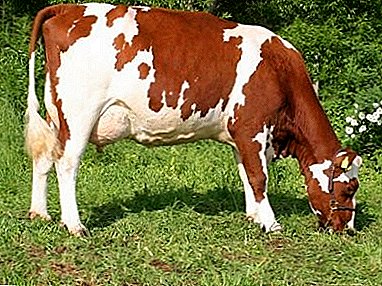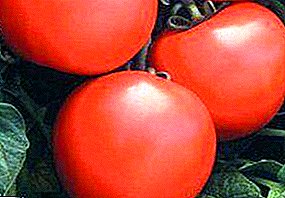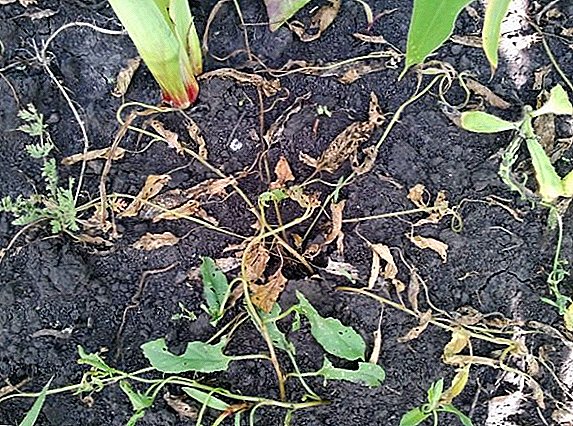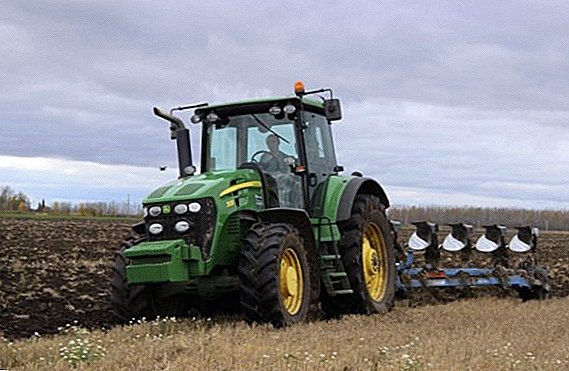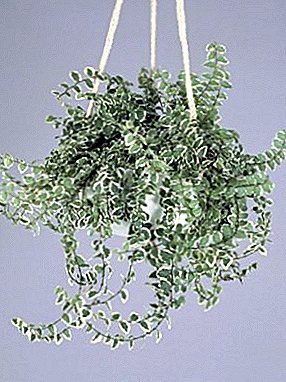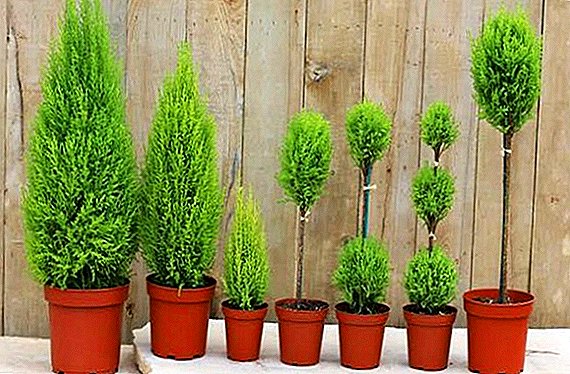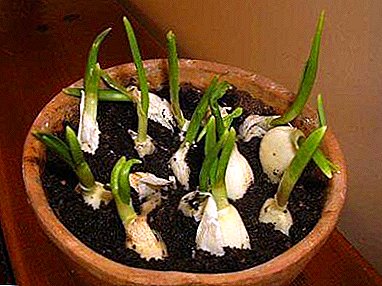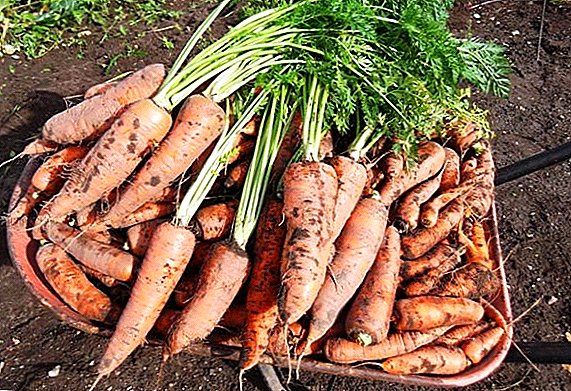 Today we will introduce you to a beautiful variety of late carrots called "Queen of Autumn". There are many varieties that have many positive qualities, but the "Queen of Autumn" is considered to be one of the best for growing in a warm and temperate climate. You will learn how to properly sow that you need carrots for good growth and development, and also get an exhaustive characteristic of the variety.
Today we will introduce you to a beautiful variety of late carrots called "Queen of Autumn". There are many varieties that have many positive qualities, but the "Queen of Autumn" is considered to be one of the best for growing in a warm and temperate climate. You will learn how to properly sow that you need carrots for good growth and development, and also get an exhaustive characteristic of the variety.
Description and photo
Variety of carrots "Queen of Autumn" has the following description: late carrot, which has a spreading leaf rosette with leaves of medium length, painted in a light green color. The fruit has a regular elongated shape, reaches a length of 30 cm and a weight of 150-200 g. The root crop is formed as a long cone, so the carrot has the appropriate length.
The flesh is colored in a traditional orange color, thick, juicy and fairly sweet. It contains about 11% of sugar and up to 17 g of carotene per 100 g of product.
Gardeners prefer to grow plants of several varieties, so it is interesting to get acquainted with the features of carrots Nantes, Vita Long, Samson, Shantane.

Characteristics of a variety
We turn to the characteristic of the variety, which will give us more information about the plant.
Since it takes about 120-130 days from sowing seeds to harvesting, the variety is considered late. Harvesting is carried out in early October.
The yield of the variety is quite good - up to 8 kg from one square, but only on the condition that carrots grow in fertile soil. If conditions are unfavorable, the yield will be around 5 kg.
Carrots are great for preparing fresh salads, and for cooking or processing into juice. It is also important to have a long shelf life, during which gustatory and commercial qualities are preserved. Also, the root is resistant to cracking.
Under appropriate conditions, carrots can be stored for about 8 months.
Important! Carotene is registered as a food additive E160a.
 It is worth noting that the "Queen of Autumn" refers to the "Carotene" variety type due to the high content of the corresponding substance.
It is worth noting that the "Queen of Autumn" refers to the "Carotene" variety type due to the high content of the corresponding substance.Carrots "Queen of Autumn", according to the characteristics, is a good choice for both small farms, and for the cultivation of monoculture and supply to the market.
Advantages and disadvantages
It is necessary to analyze the strengths and weaknesses of the variety to determine the optimal climatic conditions of cultivation, as well as to select the soil.
Minuses:
- dull color;
- fruits of various sizes are formed;
- It is difficult to extract a long root vegetable from dense grounds.
- good yield;
- long shelf life;
- root crops have a good weight and an acceptable shape;
- excellent taste and high content of carotene;
- disease resistance.

Did you know? Wild carrot had a bright purple color. Orange is the result of careful selection. She was held in the Netherlands, in honor of the local royal family of the Oran dynasty, because orange is its dynastic color.
The choice of location and time for cultivation
Carrots "Queen of Autumn" is not very demanding in terms of growing, but still it is necessary to create favorable conditions to get a high yield. Next, we shall understand where it is worth sowing carrots and what kind of care is needed for the root crop.
Lighting and location
Location and soil. You need to select only flat areas. Take care that the place is not flooded and was not in the lowlands. The height of groundwater does not matter much.
Lighting. Carrots grow well and develop only in direct sunlight. Planting in the shade or half-shade will destroy the root crop, and you will receive several times less crop than planned, and its taste and commercial qualities will be extremely bad.
Soil type
As for the substrate, it must have good drainage properties (clay soils immediately disappear) and at the same time be fertile, therefore sandstones are also unacceptable. The ideal option is chernozem, or soils that have good drainage properties and the same fertility. But clay and sandy soils, even after making a "ton" of fertilizers, will produce worse crop than the options described above.
The ideal option is chernozem, or soils that have good drainage properties and the same fertility. But clay and sandy soils, even after making a "ton" of fertilizers, will produce worse crop than the options described above.
Important! Carrot juice can be called real "a panacea", as it is prescribed not only in avitaminosis, but also in patients with gallstone disease, as well as people who have had a heart attack.
When to embark
Sowing seeds need to engage in late May, in the last decade of September to collect products. This option is preferred in temperate climates. In the more southern areas, it is recommended to sow the seeds in early June, since in the fall you can later collect products without fear of cold weather and prolonged rains.
Sowing seeds
Seeds should not be placed deep, so that the shoots can break through the ground.
The first thing to do before sowing is to soak the seeds in warm water for 2-3 hours, otherwise they will rise for a very long time. After that, the seeds are put in a wet cloth and left to swell for a day. As soon as the seeds increase in size several times, they can be sown.  There are many ways to sow carrots, but we will choose the least time consuming.
There are many ways to sow carrots, but we will choose the least time consuming.
Since the seeds are very small, they, for ease of planting, need to be combined with sand and sow the resulting mass. So you will achieve a normal flow of seed and do not thicken the planting. You need to connect 1 part of the seed with 2 parts of sand. This is the best option, since others require a large amount of time (for example, sticking on toilet paper).
Did you know? For the first time carotene was isolated from carrots. This substance was named after her: in Latin carrots - "carota".
Now let's talk about how to prepare the plot for sowing the root.
We need to pre-dig the selected area and carefully walk the rake to break all the breasts of the earth. If you do not do this, you will get curves, “two-legged” fruits that will have an unacceptable form for sale.
After this, we make grooves with a depth of no more than 1 cm, spill them with water and produce sowing. At the same time, keep in mind that the distance between the grooves must be at least 15 cm, otherwise it will be very difficult to care for the carrots, and it will be almost impossible to remove weeds without harm to the plant.  Immediately after sowing, the soil is compacted slightly and, if the substrate is very dry, it is additionally irrigated with a small amount of water.
Immediately after sowing, the soil is compacted slightly and, if the substrate is very dry, it is additionally irrigated with a small amount of water.
Compliance with the correct agricultural practices not only increases the yield, but also reduces the likelihood of being affected by diseases and pests.
Grade Care
It is extremely important to take good care of carrots at the initial stage, otherwise the root crop will grow and develop poorly.
Beginning from germination and until the appearance of the first true leaves, the substrate must constantly be wet, to the extent that on special hot days, special sprinklers are installed on the landings.
Important! Watering should be moderate. From a lot of moisture carrot cracks.
As soon as real leaves appear, watering can be reduced. If the weather is dry, then a week to shed the beds need about 3-4 times, no more. If it rains, though not strong, it is better to refuse watering.  Regardless of how well you sow the carrots, you still need to thin it out, otherwise all the roots will be small, and the total yield will fall several times. The first thinning is carried out in the phase of 3 true leaves, then - when the carrot is as thick as a pencil.
Regardless of how well you sow the carrots, you still need to thin it out, otherwise all the roots will be small, and the total yield will fall several times. The first thinning is carried out in the phase of 3 true leaves, then - when the carrot is as thick as a pencil.
There should be a gap of 3 cm between neighboring plants after the first thinning, which is worth remembering. After the second thinning - at least 5 cm.
Pay attention to the fact that after thinning the plants need to water.
Particular attention should be paid to measures aimed at preventing the occurrence of carrot pests - nematodes, slugs, bears, carrot flies, wireworms, aphids, moles, shrews, mole rats, rats.About dressings: “The Queen of Autumn” is fed only with “mineral water”, it is not necessary to add humus or compost. 5 days after each thinning, lay a nitroammofoska on the beds and pour enough water.

Harvest
To finish the article we will be the right harvest.
The first thing to say - do not rush to pull the "Queen of Autumn" out of the ground. No wonder we wrote that in a warmer climate, the collection is carried out later. The fact is that the earlier you remove the carrots from the soil, the less it will be stored. Of course, if you are sure that the rains will soon be “charged”, then it is better to harvest the crop earlier, but still it is worth paying attention to the maturation period of 120-130 days.
Important! Whole carrot juice weakens the toxic effect of antibiotics, and also improves the immune system, which contributes to increased resistance to colds.
Harvest should be in dry weather. If it is not possible to do this, the roots must be cleaned of dirt and dried. This aspect greatly affects the future keeping quality of the product.
Once all the carrots have been dug, they are sorted, removing damaged or spoiled vegetables. Rejected root vegetables in the shortest possible time allowed for processing or disposed of.
Further storage is carried out at high humidity and a temperature of 0-2˚С. It is in such conditions that products are stored the longest.
Now you know what a given type of carrot is, what makes it valuable both for personal use and for sale. Follow our instructions and try to navigate according to weather conditions, so that carrots grow in maximum comfort. Do not use fresh manure for fertilizer and try not to apply organic fertilizer in the process of growth and development in order to preserve the usual shape of the root crop.


